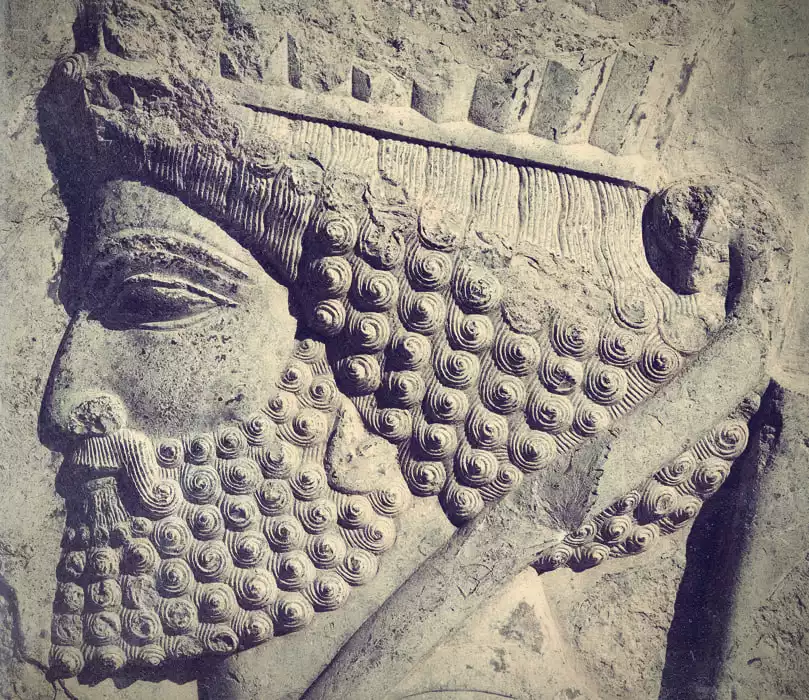
As Persian kings go, few loom as large as Xerxes I, also known as Xerxes the Great. Ascending the throne in 486 BCE upon the death of his father Darius I, Xerxes spent the first half of his reign completing unsuccessful military campaigns against Greece. Despite early humiliations, this ambitious ruler presided over the apex of the vast Persian Empire his forebears had built across western Asia and northeastern Africa before being assassinated in a palace coup in 465 BCE.
Xerxes Secures Power in Persia
Upon the death of his father King Darius I in 486 BCE, Xerxes moved quickly to consolidate his power over the sprawling Persian Empire. As the eldest son of Darius and his predecessor Cyrus the Great’s daughter Atossa, Xerxes had a strong claim to the throne. However, regional revolts threatened the empire’s stability during the early days of his reign. Masterfully exerting his authority, he brutally suppressed insurrections in Egypt and Babylon to secure Persian domination.
With order restored internally, Xerxes looked to expand Persia’s borders. He set his sights across the Aegean Sea on mainland Greece, which his father had tried and failed to conquer a decade earlier. Seeking vengeance for Persia’s defeat at Marathon in 490 BCE, Xerxes spent four years amassing a massive invasion force featuring soldiers levied from every satrapy in the empire along with conscripts from tributary states. According to the ancient Greek historian Herodotus, Xerxes’ army numbered over 2.5 million men, though modern estimates place the figure closer to 70,000 or 80,000.
In the spring of 480 BCE, his forces streamed across the Hellespont from Asia into Europe over two pontoon bridges comprising hundreds of ships. Upon reaching Greece, Xerxes demanded the traditional tokens of submission – earth and water – from the city-states. Many acquiesced, but 31 polities formed the Hellenic League to resist Persian domination. After the Persian army decimated King Leonidas’ small Spartan force defending the pass at Thermopylae, most alliance members withdrew. Now Xerxes stood poised to conquer all of Greece.
Though Xerxes ultimately failed in his Greek ambitions, being forced to withdraw after naval defeats at Salamis and Plataea, his reign still represents the apex of the Persian Empire. At its peak, Persia ruled over approximately 50 million people across three continents thanks to the ruthless conquests of Xerxes and his predecessors. Nevertheless, fault lines in this vast, multiethnic dominion gradually surfaced after his death, setting the stage for Alexander the Great’s destruction of the Persian Empire just 150 years later.
Etymological and Historical Analysis
The name Xerxes derives from the Old Persian form Khshayarsha, meaning “ruling over heroes.” This aptly describes his role as the head of the Persian armies. The first part of the name, khshaya, means to rule, reign, or be king. The second element arsha relates to the Persian term for hero.
So Xerxes essentially means “ruler of heroes” or “king of warriors” in Persian. This epithet would suit his self-perception and ambitions as the leader of the vast multiethnic Persian forces. However, his eventual failures against the Greeks in a sense repudiate his lofty name and claim to command heroic warriors. Nevertheless, in securing power during the volatile early phase of his reign through brutal repression, Xerxes certainly displayed the iron will and determination fitting for an exalted Persian “king of heroes.”
References
Ancient Society O’ Neil, J L. North Ryde Vol. 18, Iss. 1, (Jan 1, 1988): 6.
Brill The Life of Xerxes.
Briant, P. (2002). From Cyrus to Alexander: A History of the Persian Empire. Eisenbrauns.
Sekunda N. and Chew, S. (1992). The Persian Army 560–330 BC (Elite). Osprey Publishing.
